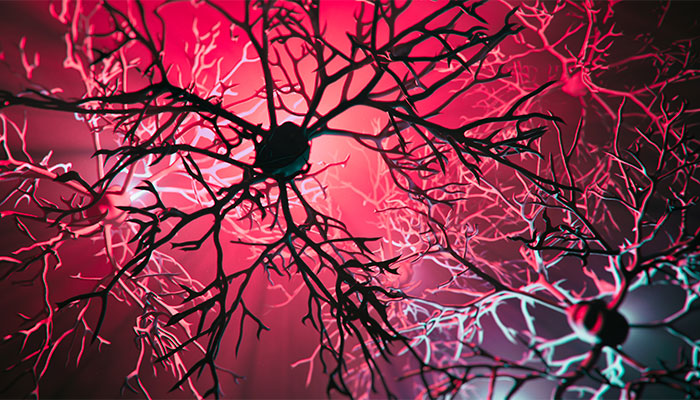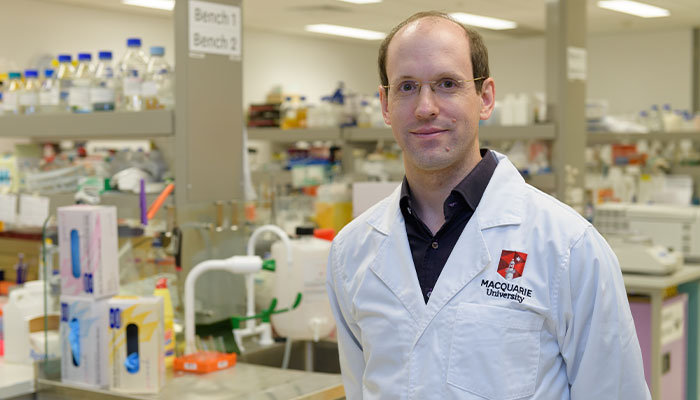Macquarie University researchers have upended a long-standing theory about what happens in the brain to cause Alzheimer’s disease (AD), opening up new opportunities in the scientific quest to conquer the devastating disorder.

Scourge: Alzheimer's disease is the most common form of dementia and Australia's second leading cause of death.
In collaboration with an expert in cancer cell cycles, the neuroscientists have discovered a mechanism by which neurons that unexpectedly enter a regenerative state are protected from the toxicity of AD-causing plaque proteins.
Professor Lars Ittner, Director of Macquarie’s Dementia Research Centre, explains that up until now the exact opposite was believed to be the case, and that these unusual neurons were in fact thought more likely to succumb to toxins.
“Basically we have thrown a long-standing theory of how AD comes about overboard, and opened up new research opportunities to better understand the disease in the first place, but also in the long-term to intervene and capitalise on these processes in order to protect neurons,” says Ittner, a senior co-author of the study which has been published in the prestigious PNAS, Proceedings of the National Academy of Sciences of the USA.
I would say the community of Alzheimer’s researchers will find an effective drug in the upcoming years.
Many years ago, Ittner says, scientists had observed that neurons in the brains of sufferers of AD – the most common form of dementia – had started to re-enter the cell-cycle process, in which cells through a series of events divide into two.
This was significant because neurons are not meant to multiply and recover lost numbers. They are ‘post-mitotic’ cells which, unlike the cells in other organs of the body, do not regenerate.
“We all know that in AD we are losing brain cells, called neurons, and it was thought for a long time that the neurons we are born with are all that we will ever have, so if you lose a neuron it, and the information it has stored, are gone forever.”
When the re-activated neurons were observed in post-mortem AD brains, the theory was put forward that these neurons were more vulnerable to toxins such as oligomeric amyloid-beta – the plaque protein causing AD.
“This was the scene where our work started,” says Ittner. “We found that the observation was not in line with the theory, because when an AD brain comes for autopsy there are more of these neurons that are in a cell-cycle stage, and we asked why aren’t there less of them because if they are more vulnerable they should be gone.”
Collaboration the key to breakthrough
Ittner’s team partnered up with his friend and cancer researcher Professor Nikolas Haass, from the University of Queensland, who has applied groundbreaking technology to study the life cycle of cells for his research into melanoma and drug resistance.

New spark: Neurons, which are not meant to multiply, have surprised researchers by re-entering a regenerative state.
Using red and green fluorescent markers, Haass’s technique allows researchers to visualise under the microscope the events of the cell cycle, and cell death.
“We employed this tool to neurons, and then exposed them to the beta-amyloid toxin found in the AD brain,” Ittner explains.
“What we observed is that there were indeed cells that entered the cell cycle, but contrary to the opinion that they are more vulnerable, they in fact survived longer while the neurons that failed to activate the cell cycle, underwent cell death.”
You should go always with an open mind to research ... only if we question ourselves over and over can we make progress.
The researchers observed the same results first in cultures of neurons, and then in the brains of mice genetically engineered to develop AD.
Says senior co-author Haass: “This new paper nicely demonstrates that methodologies developed for research in to one disease (cancer) can be extended to address other interdisciplinary entities, such as Alzheimer’s disease.
“Our findings are very exciting, as we challenge one of the long-standing theories for how Alzheimer’s disease develops.”
Ittner: “The next step for us is to interfere in the processes we have observed in order to find ways to activate the protective effects of neurons.”
Never discount the impossible
Ittner says when the study’s co-lead author Stefania Ippati first proposed the potentially theory-debunking experiment five years ago as part of her PhD, he was sceptical.

Progress: Professor Lars Ittner at the Dementia Research Centre ... the collaboration and its findings have increased his optimism that an effective treatment for Alzheimer's will be found.
“When she showed me the first culture experiment, I made her repeat it a number of times before I believed it,” he says.
“It shows you should go always with an open mind to research, and don’t discount the impossible, and only if we question ourselves over and over can we make progress.”
Indeed, Ittner says the findings have increased his optimism that effective treatment – and ultimately even a cure – will be found for AD, which is Australia’s second leading cause of death.
“I would say the community of Alzheimer’s researchers – and especially by bringing in other disciplines – will find an effective drug in the upcoming years,” he says.
“It might be the next generation of researchers that find a cure, but I am pretty sure we will alter the course of the disease in my lifetime.”
Professor Lars Ittner is Director of the Dementia Research Centre and Professor in the Department of Biomedical Sciences.



